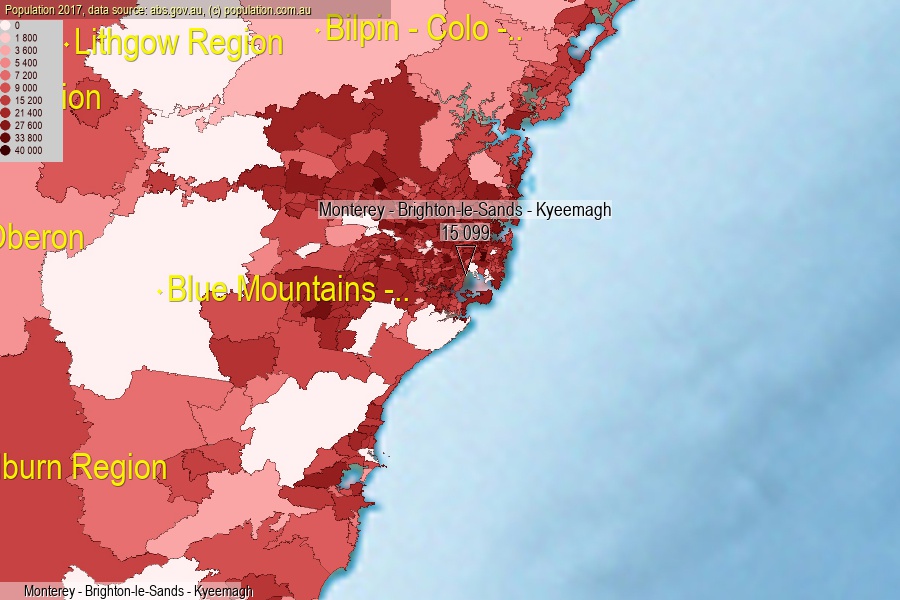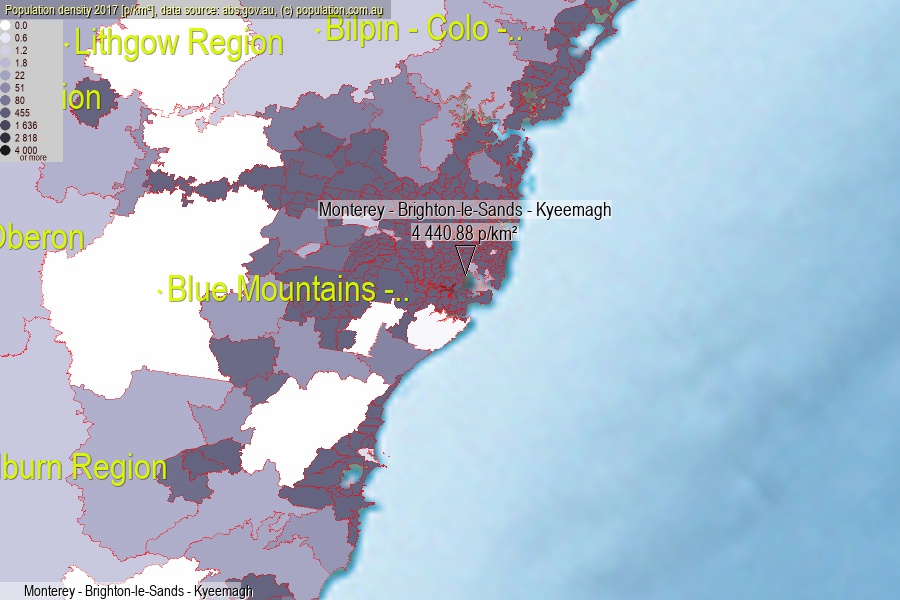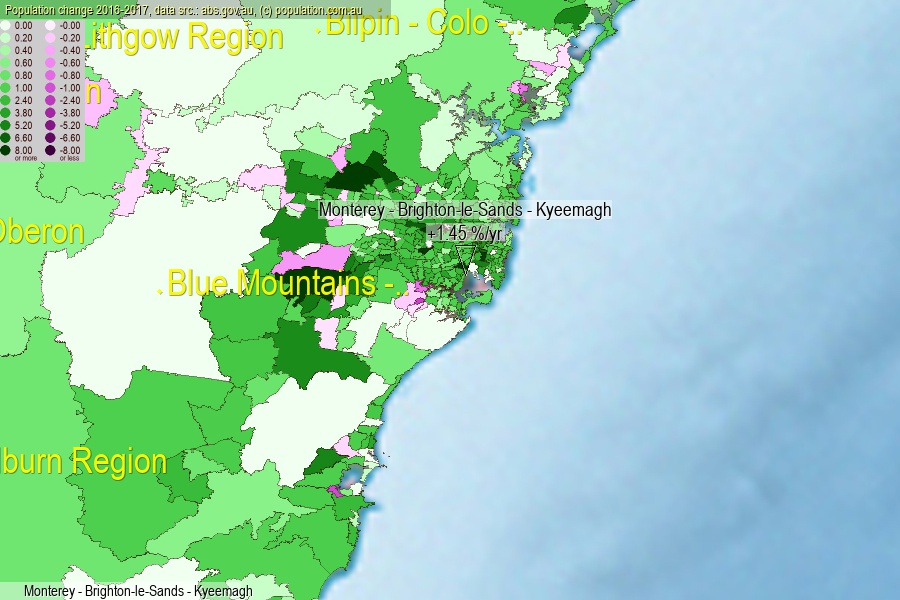 population.com.au
population.com.auLast official estimated population of Monterey - Brighton-le-Sands - Kyeemagh (as Statistical Area Level 2) was 15 099 people (on 2017-06-30)[2]. This was 0.06% of total Australian population and 0.19% of NSW population. Area of Monterey - Brighton-le-Sands - Kyeemagh is 3.40 km², in this year population density was 4 440.88 p/km² . If population growth rate would be same as in period 2016-2017 (+1.45%/yr), Monterey - Brighton-le-Sands - Kyeemagh population in 2025 would be 16 944. [0]



Click to enlarge. Monterey - Brighton-le-Sands - Kyeemagh is located in the center of the images.
Population [people], population density [p./km²] and population change [%/year] [2]
View borders » (new window) [4]
[1991-1992] -0.52 %/Yr.
[1992-1993] -1.17 %/Yr.
[1993-1994] -0.89 %/Yr.
[1994-1995] -0.13 %/Yr.
[1995-1996] -0.06 %/Yr.
[1996-1997] +1.50 %/Yr.
[1997-1998] +0.81 %/Yr.
[1998-1999] +1.04 %/Yr.
[1999-2000] +0.68 %/Yr.
[2000-2001] +1.50 %/Yr.
[2001-2002] -0.79 %/Yr.
[2002-2003] -0.73 %/Yr.
[2003-2004] -0.24 %/Yr.
[2004-2005] -0.06 %/Yr.
[2005-2006] -0.69 %/Yr.
[2006-2007] +0.93 %/Yr.
[2007-2008] +3.21 %/Yr.
[2008-2009] +1.67 %/Yr.
[2009-2010] +1.37 %/Yr.
[2010-2011] -0.23 %/Yr.
[2011-2012] +1.22 %/Yr.
[2012-2013] +1.63 %/Yr.
[2013-2014] +1.47 %/Yr.
[2014-2015] +1.30 %/Yr.
[2015-2016] +1.19 %/Yr.
[2016-2017] +1.45 %/Yr.
[0] Calculated with linear interpolation from officially estimated population
[1] Read more about SA2 and Australian Statistical Geography Standard (ASGS) on abs.gov.au
[2] Population data from Australian Bureau of Statistics (Population and density: 2017; change: 2016-2017)
[3] Digital Boundaries: Australian Statistical Geography Standard (ASGS) 2016.
[4] Border coordinates are simplifyed using Ramer-Douglas-Peucker algorithm.